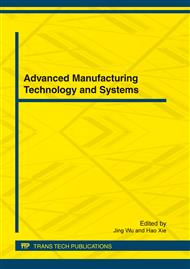p.361
p.366
p.371
p.376
p.380
p.385
p.390
p.395
p.400
The Parameter Model and the Non-Parameter Model of Magnetorheological Dampers in Suspension
Abstract:
The researchers have recently increased the attention in controllable fulids and its applications.Magnetorheological(MR) dampers are devices that employ rheological fluids to modify their mechanical propeties.Their mechanical simplicity,high dynamic range,lower power requirements,large force capacity,robustness and safe manner operation in case of fail have made them attractive devices to semi-active control in civil,aerospace and automotive suspension applications.The mechanical models of the magnetorheological dampers by parameter modeling and non-parameter modeling were discussed and analyzed. In especial, eight models were described in detail. It is pointed out that the different design should adapt different model in order to take advantage of its characteristic.
Info:
Periodical:
Pages:
380-384
Citation:
Online since:
March 2012
Authors:
Price:
Сopyright:
© 2012 Trans Tech Publications Ltd. All Rights Reserved
Share:
Citation:


